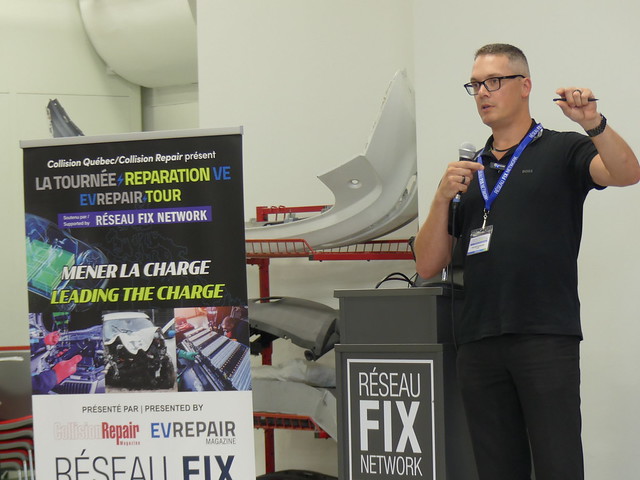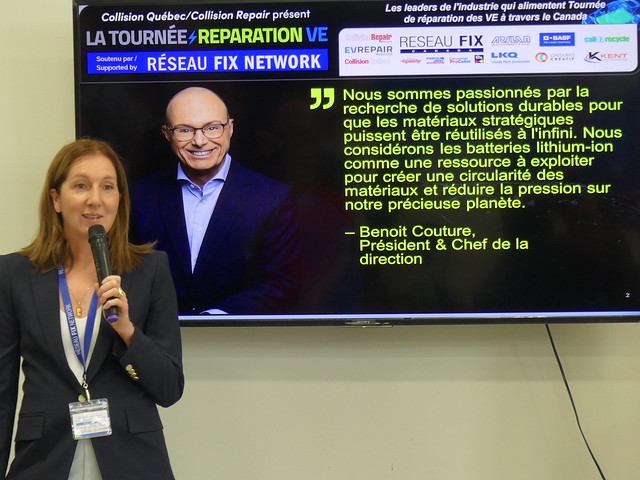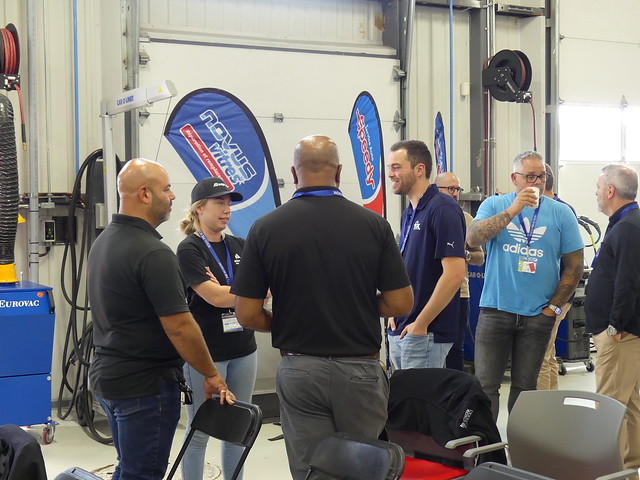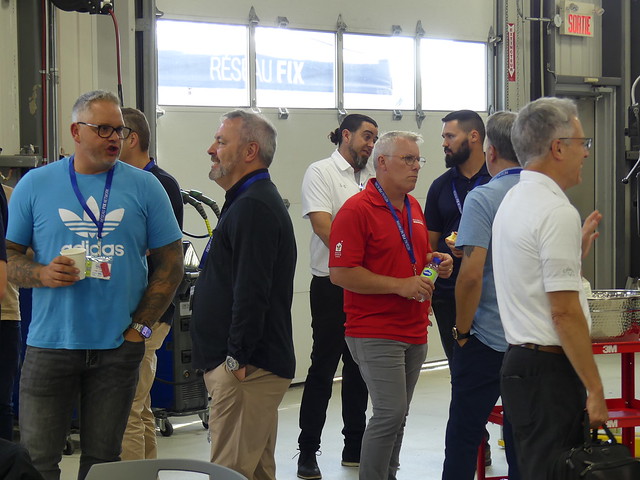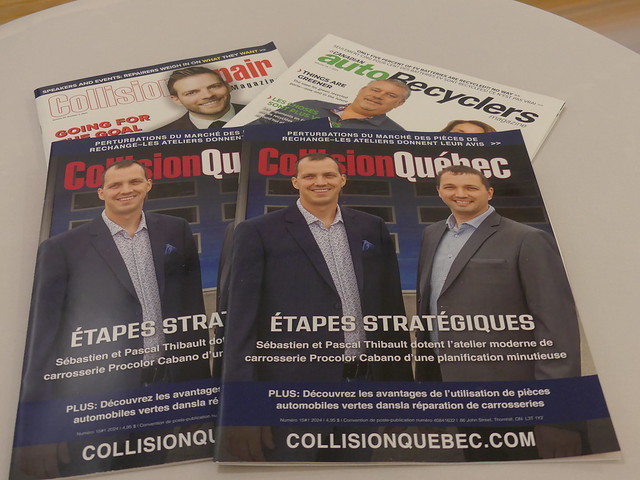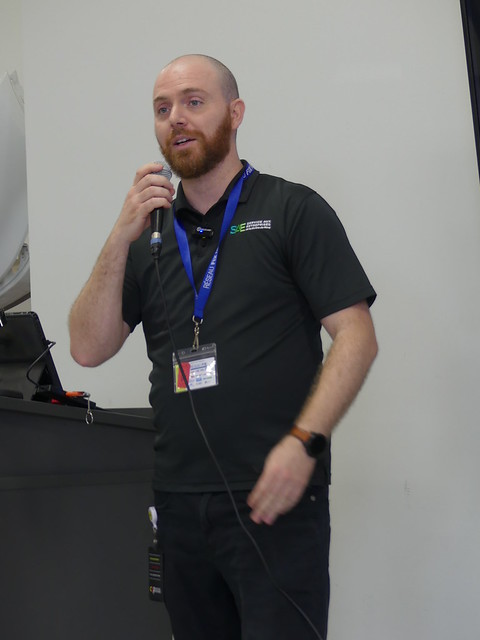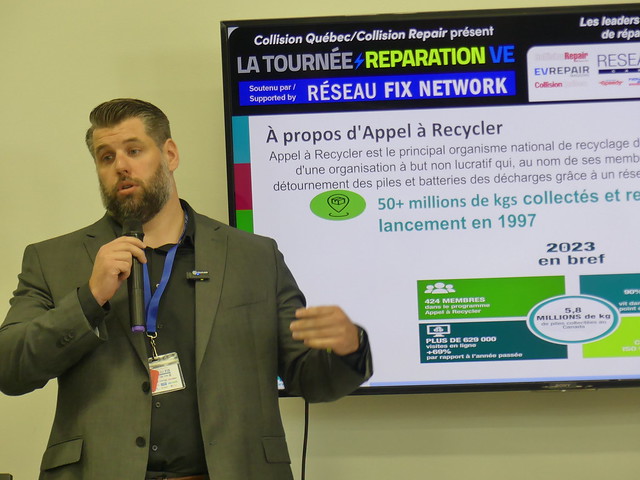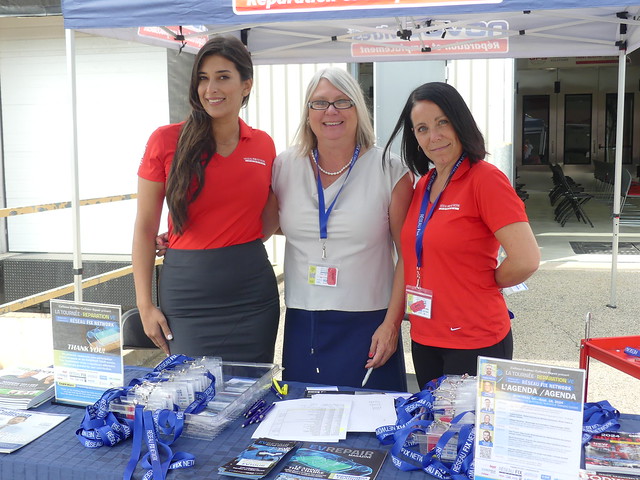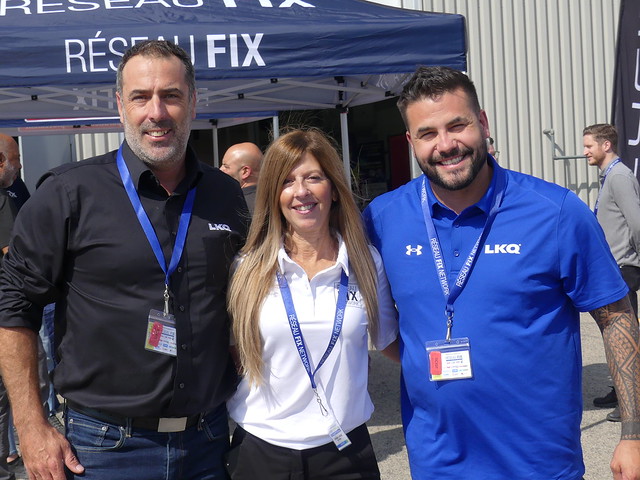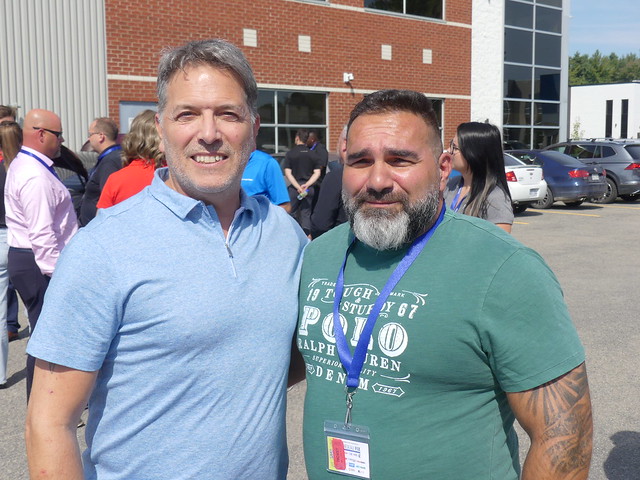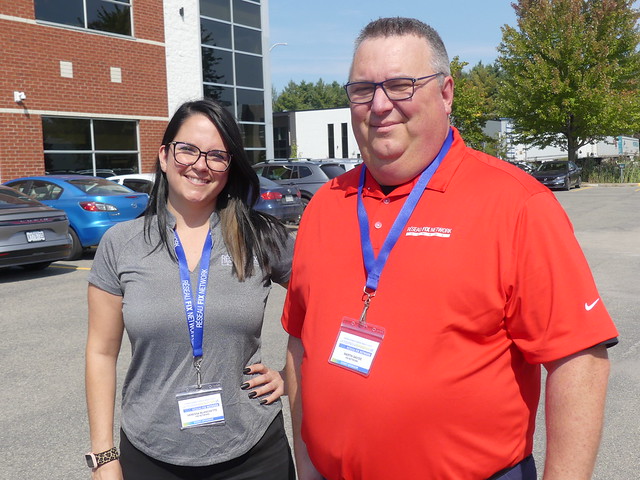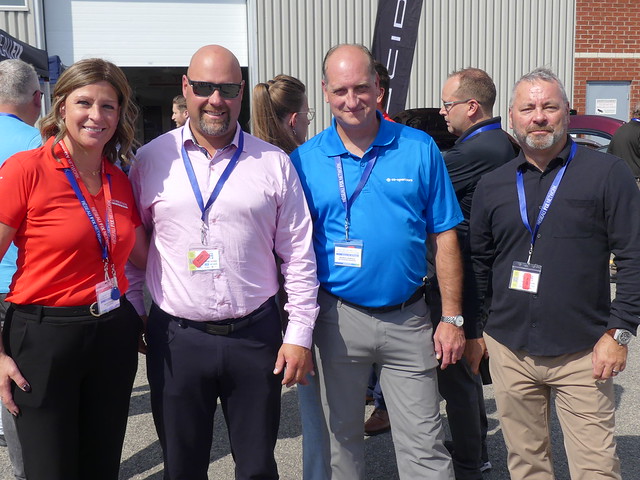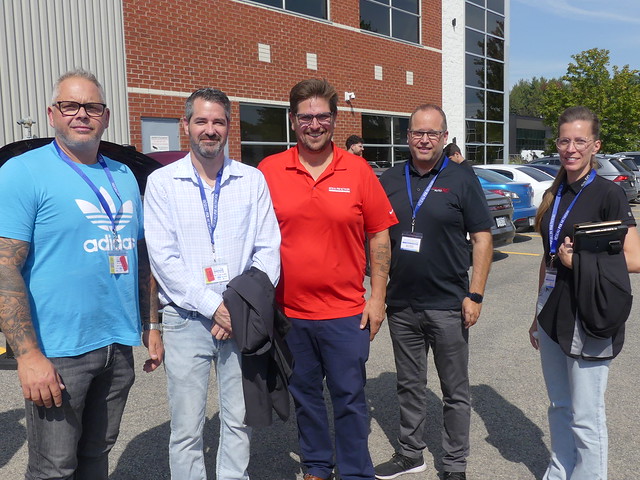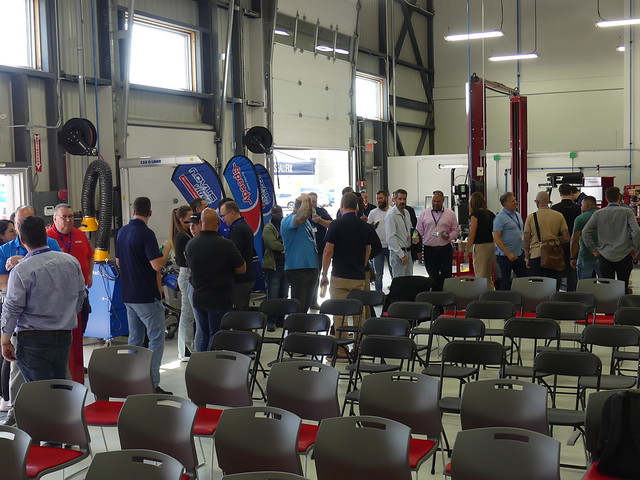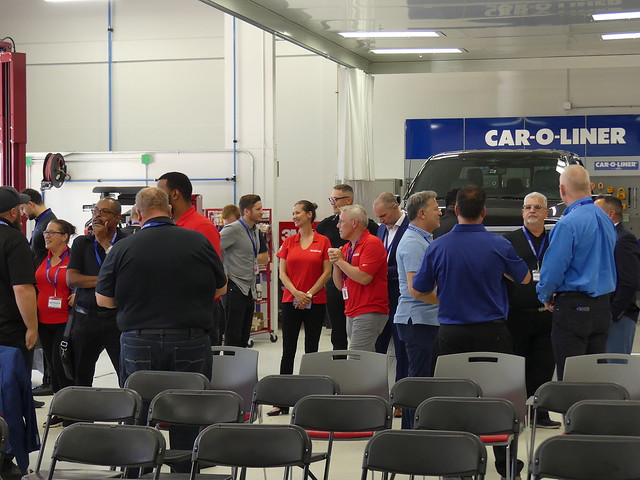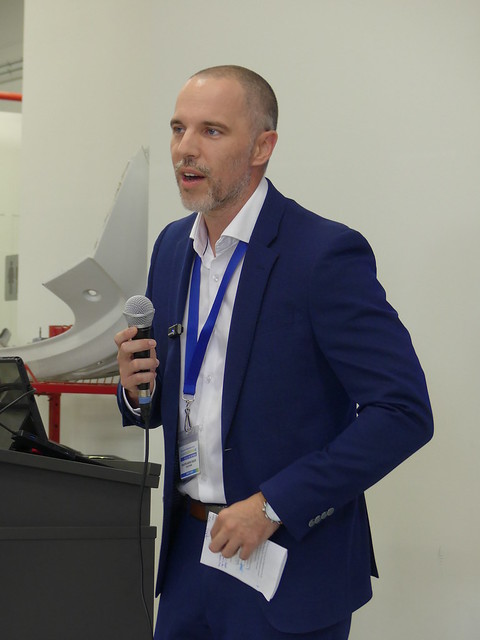Blainville, Quebec — On Wednesday, Collision Repair magazine’s EV Repair Tour, supported by Fix Network, continued its cross-Canada tour sharing electric vehicle repair information for the automotive aftermarket.
With dozens in attendance, the event featured four speakers and Fix Network’s Phillippe-Andre Bisson on the mic as emcee.
Phillippe Bussières, senior advisor at Conseil provincial des comités paritaires de l’industrie des services automobiles (CPCPA) began the charging day of electric learning to deliver an overview of EV knowledge for safety and profitability. He elaborated on the technological and voltage differences between hybrid vehicles, hydrogen fuel cell vehicles, extended-range electric vehicles (EREVs) and EVs.
A hybrid vehicle, Bussières pointed out, has a much smaller battery compared to an EREV or EV, due to its partial reliance on its internal combustion system.
The first step, said Bussières, is to prepare yourself for inevitable interaction with high-voltage technologies. That means acquiring PPE that protects your team against high-voltage harm: class-zero electrical insulating globes rated for 1,000 volts; CSA electrical (ohm) certified gloves and boots of the same quality. You also need to equip your team with tools to keep them safe from electrocution—insulated tools and lockout kits.
Bussières also advised installing a “security zone” in the EV repair area to ensure personnel that are not trained to handle high voltage technologies are made aware, as well as high-voltage warning stickers in potentially dangerous areas.
Bussières emphasized the effect of alternating and direct current Where AC changes direction periodically and is commonly used to power homes and businesses, DC flows in one direction and is typically found in EVs.
He said the human body’s resistance is around 2,000 Ω (ohms), depending on certain factors. The voltage emitted by an EV ranges between 400 volts and 800 volts—Ohm’s Law can be used to calculate just how much a human can stand.

Finally, Bussières stressed the “right-hand rule.” The right-hand rule is a mnemonic used in physics and electrical engineering to visualize the relationship between current, magnetic fields, and forces, particularly in electric vehicles.
By positioning your right thumb in the direction of conventional current and curling your fingers towards the magnetic field, you can predict motor rotation and component behaviour. This rule is essential for safely working with electrical systems in EVs, helping technicians understand electromagnetic interactions effectively.
Nick Poupart and Martin Archambault of Lithion Technologies were next to the stage to discuss the recycling of EV batteries in Quebec—something Lithion is highly involved in. They covered the company’s mission to repurpose the valuable metals used in EV batteries, like lithium, cobalt, nickel, manganese, aluminum and copper.
The pair discussed the process of mining to refining, and turning material to cathode and anode products. From there, these products are either turned to powdered cathode that are redirected to Lithion for reuse, or compacted into cells to be used in EVs.
These EV batteries still end up at Lithion at the end of their life, depending on the reason.
The duo also covered Lithion’s landmark opening of the Saint-Bruno recycling management site—a first-of-its-kind facility in Quebec dedicated to the management of end-of-life EV batteries. The facility produces high-quality black mass, said Poupart, in an automatic process that ensures optimal efficiency. They added that 95 percent to 98 percent of battery “waste” processed through the Saint-Bruno plant is repurposed.

Sebastian Menard from Call2Recycle Canada also discussed battery recycling. Since 1997, Call2Recycle has collected and recycled 50+ million kilograms of batteries and battery materials. The company does recycle more than just EV batteries; they recycle household batteries of up to five kilograms. The company operates on behalf of 400 different battery producers.
Batteries are collected by an authorized carrier and shipped to a Canadian sorting facility to be organized and sorted by type and chemical composition. Batteries are processed according to one of five trajectories: repair, manufacture, resale, reuse or recycling.
Ultimately, all paths for EV batteries end in recycling.
Ménard covered the early years of exploration in EVs, from the 1970s to 1990s, amidst fuel shortages and burgeoning environmental concerns. These early vehicles had limited performance in range, battery technology and capacity, he added. The true new impetus of EVs came in the 1990s with hybrid electric vehicles, plug-in hybrids and eventually, early prototype first EVs.
Between 2016 and 2022, demand for lithium-ion batteries grew by nearly 1,500 percent, said Ménard.
Finally, Ménard spoke about EV battery safety to echo Bussiéres’ presentation, stressing the need for safety around EVs and the need to promote safe and responsible handling—touching on the terrifying reality of thermal runaway—a very real concern for collision centres.
Thermal runaway in electric vehicles (EVs) is a rapid temperature increase in lithium-ion batteries, often triggered by collision damage. Causes include punctured cells, damaged battery management systems, and external heat sources. Indicators of potential thermal runaway include swelling, unusual odours, and visible damage.
Repair professionals should assess battery conditions carefully, following safety protocols and using PPE. Typically, damaged batteries should be replaced rather than repaired. Fire safety measures, including access to appropriate extinguishers, are essential.
Ongoing training in EV technology and safety is crucial for technicians to effectively manage the risks associated with thermal runaway.
With thank-you remarks to our gracious attendees and sponsors, Bisson ended the speaking portion of the event. A cocktail hour closed out the event, where everyone discussed the insights learned throughout the day.
Stay tuned for video coverage from the event–check out our photos below in the meantime.











